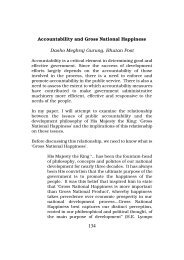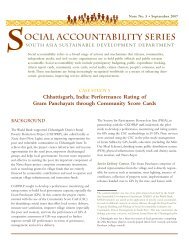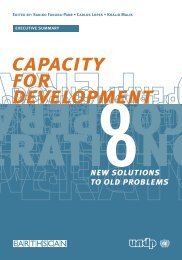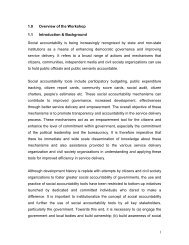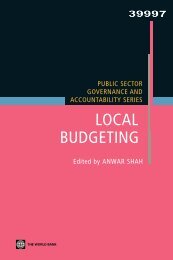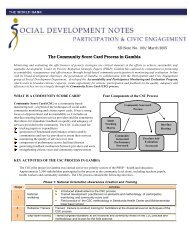Handbook on Citizen Engagement: Beyond Consultation - SASANet
Handbook on Citizen Engagement: Beyond Consultation - SASANet
Handbook on Citizen Engagement: Beyond Consultation - SASANet
- No tags were found...
Create successful ePaper yourself
Turn your PDF publications into a flip-book with our unique Google optimized e-Paper software.
Chapter IX. Practical TipsHere are some nuggets of advice and wisdom from people who practice citizen engagement.The OECD <str<strong>on</strong>g>Handbook</str<strong>on</strong>g> <strong>on</strong> public participati<strong>on</strong> offers the following 10 tips: 43Take it seriously: It’s not about how many documents are produced or the number of events thatunfold, but rather their c<strong>on</strong>tent, their process and what is d<strong>on</strong>e with the informati<strong>on</strong>. Thisrequires planning and dedicati<strong>on</strong>.Start from the citizen’s perspective: Already outline in the secti<strong>on</strong> <strong>on</strong> framing (Chapter VII),the success of the engagement process is dependent <strong>on</strong> the ability to determine why a citizenmight be interested in participating.Deliver what you promise: An essential step in building trust and civic participati<strong>on</strong>.Watch timing: This applies across many issues – time for citizens to prepare themselves toparticipate, timing for relevance in a larger policy process, time for trust to develop.Be creative: There is no “cut and paste” model of citizen engagement. Every situati<strong>on</strong> requires aunique approach and series of methods.Balance different interests: No easy task, this is the <strong>on</strong>going challenge of government. <strong>Citizen</strong>engagement provides another source of input and opens the doors to understanding betweendiffering parties, although this is not guaranteed!Be prepared for criticism: People may perceive citizen engagement forums as a space to vent.Processes are not always perfect.Involve your staff: Your staff deserves to be “engaged” as well, either for the project at hand orfor internal policy and program development.Develop a coherent policy: Strengthening government-citizen relati<strong>on</strong>s is in itself a policy andis an important complement, not replacement of, the instituti<strong>on</strong>s of citizen engagement.Act now: Do not wait for relati<strong>on</strong>s with citizens to become stale. Taking acti<strong>on</strong> to engagecitizens will prevent future problems.The following tips were drawn from interviews c<strong>on</strong>ducted during research for this handbook:“Youth engagement [or citizen engagement] is most successful when it is embedded in theprocess at hand – when it is a priority from the very beginning rather than an afterthought.”Nishad Khanna, Students Commissi<strong>on</strong>“There are three requirements for a successful citizen engagement process: the Three R's: Real,Relevant and give Resp<strong>on</strong>sibility.” Peter MacLeod, The Planning Desk, drawing <strong>on</strong> StudentsCommissi<strong>on</strong>“<strong>Citizen</strong>s are more inclined to participate in urban planning processes at a smaller scale ratherthan a larger scale. We found that l<strong>on</strong>g-term plans and visi<strong>on</strong> exercises tend to be a bit far fromthe day-to-day preoccupati<strong>on</strong> of citizens. <strong>Citizen</strong>s tend to be asked more often to c<strong>on</strong>tribute toc<strong>on</strong>crete initiatives that will improve their quality of life.” Pierre Dubé, Nati<strong>on</strong>al CapitalCommissi<strong>on</strong>44 CANADIAN POLICY RESEARCH NETWORKS




